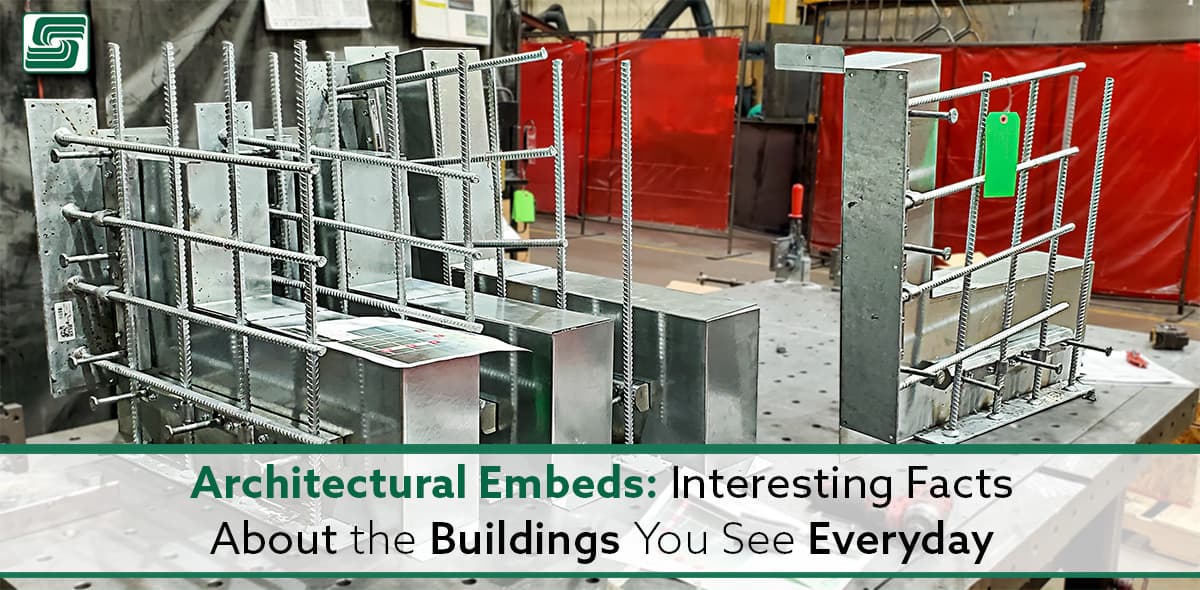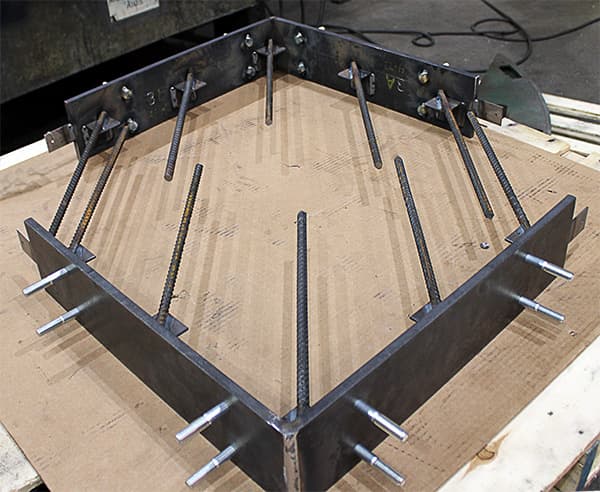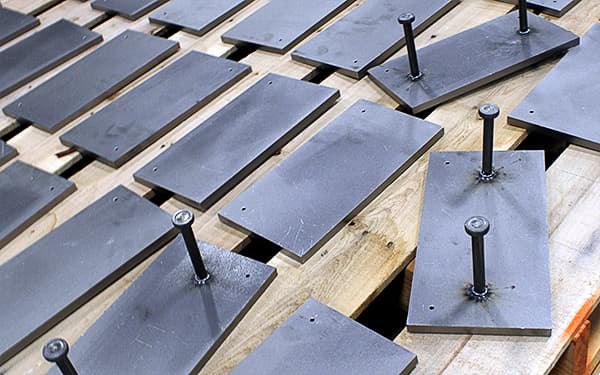
Today, we see different types of buildings everywhere. From residential buildings to offices, hotels, and hospitals—they come in all shapes and sizes. But have you ever wondered about the architectural techniques used to build them? This article will provide insights into architectural embeds and showcase some of the most famous buildings that use them. Read on to find out more!
What Are Architectural Embeds?
An architectural embed is a form of construction used to make concrete structures. In short, embeds reinforce certain elements like steel bars or mesh within concrete.
 Embeds are used to strengthen the concrete and make it durable.
Embeds are used to strengthen the concrete and make it durable.
Types of Embeds:
Steel Bars
Steel bars are one of the most common and widely used architectural embeds. They are usually made from rebar steel sheets rolled into thin, long ribbons and placed inside the concrete.
Fibrous Materials
Fibrous materials like polymer fabrics, natural fibers, and glass fibers are widely used as architectural embeds.
Mesh Materials
Mesh materials like steel, polypropylene, and stainless-steel mesh are widely used as architectural embeds.
Reinforced Concrete
Reinforced concrete with steel bars is a special type of concrete that uses architectural embeds.
Pre-cast Concrete
Pre-cast concrete is a special type of cast in a particular mold, usually cast in advance and made ready for use.
Soil Reinforced Concrete
Soil reinforced concrete is a special type of concrete that uses architectural embeds reinforced with soil.
Why Use Architectural Embeds?
 Architectural embeds make concrete stronger, denser, and more water-resistant and are also used to increase the lifespan of concrete by preventing cracks.
Architectural embeds make concrete stronger, denser, and more water-resistant and are also used to increase the lifespan of concrete by preventing cracks.
Embeds can change the concrete's properties by changing its appearance in color or texture, or change the function of the concrete, making it magnetic, or changing its sound insulation properties.
Famous buildings that make use of architectural embeds
Here’s a list of some famous structures built using architectural embeds.
Eiffel Tower
The Eiffel Tower was built in 1889 for the World Fair in Paris. It is one of the most famous architectural embeds ever built. Its fame is also because when built, it was the tallest building in the world. They made the Eiffel Tower from steel bars as an architectural embed.
- History did not forget French scientists and engineers working in the 19th century; they also engraved 72 of their names on the Eiffel Tower.
- It takes a lot of work to keep the Eiffel Tower looking good. Around 60 tons of paint are applied to the Tower every seven years, preventing the iron from rusting.
- There is a secret military bunker underneath the Tower's south pillar, which is now a small museum, and tour groups can explore the diminutive space.
Empire State Building
They built the Empire State Building in 1931 in New York City. It stands at a whopping 102 stories or 3,850 feet high.
- The design, planning, and construction of the Empire State Building took just 20 months from start to finish. Using 3,400 men daily, it finished early and was under budget.
- Its upper 200-foot Tower was initially designed as a mooring mast for airships. The building's owners originally constructed the mast as a docking port for lighter-than-air dirigibles.
- Because of the 1929 stock market crash and the onset of the Great Depression, less than 25 percent of the building's retail space was occupied upon its opening in 1931, earning it the nickname the "Empty State Building." It wasn't until World War II that the building finally became profitable.
One World Trade Center
Built in 2013, One World Trade Center is a beautiful building in New York City.
- One World Trade Center stands at 1,776 feet, a direct reference to the signing of the Declaration of Independence.
- World Trade Center One contains over 40,000 metric tons of structural steel.
- After studying each structural and safety failure of the Twin Towers, developers carefully designed the new Tower to be the safest office building in the world.
- One World Trade Center has 71 elevators traveling as fast as 23 miles per hour. The elevator ride takes 60 seconds to travel from the ground floor to the 102nd floor.
Burj Khalifa
The Burj Khalifa is an architectural marvel built in Dubai.
- The Burj Khalifa's height is 2,716.5 feet: three times as tall as the Eiffel Tower and nearly twice as tall as the Empire State Building.
- The Burj Khalifa holds six other world records.
- It's the tallest freestanding structure
- Has the highest number of stories
- Has the highest occupied floor
- Has the highest outdoor observation deck
- Has the elevator with the longest travel distance
- Has the tallest service elevator in the world.
- The tip of the sphere of the Burj Khalifa can be seen from up to 59 miles away.
Guggenheim Museum
The Guggenheim Museum in New York City is a building made from polymer fibers as an architectural embed.
- The Solomon R. Guggenheim Museum in New York City was Frank Lloyd Wright's most notable achievement, opening in October 1959.
- The Guggenheim ramp—from the ground floor to the dome—is 1,416 feet or over 1/4 of a mile long.
- Admission was 50 cents when the Guggenheim Museum first opened.
Louvre Pyramid
The Louvre Pyramid is another architectural marvel. It is a giant glass pyramid using glass fibers as an architectural embed and a significant tourist attraction in Paris.
- Built in 1190, the Louvre was originally a fortress
- The Louvre's glass pyramid is a 69-foot structure made entirely of glass and metal.
- It would take 100 days to see every piece of art in the Louvre if you spent 30 seconds at each piece, 24 hours a day.
Christ the Redeemer
The Christ the Redeemer statue is a beautiful religious architectural marvel in Brazil. It is the second tallest statue in the world and uses the soil as an architectural embed.
- They built Christ the Redeemer using reinforced concrete and has an outer shell of 6 million soapstone tiles.
- Initially, the statue was supposed to be holding a globe in one hand and a cross in the other.
- They voted the statue one of the New Seven Wonders of the World.
Burj Al Arab Jumeirah
The Burj Al Arab is a luxurious hotel in Dubai.
- Burj Al Arab Jumeirah, standing at 1,053 feet, is 46 feet taller than the Eiffel Tower and only 197 feet shorter than the Empire State building.
- They built Burj Al Arab on a man-made island, accessed by a 1,115-foot-long bridge road.
- Designers used 19267 square feet of 24-carat gold leaf to embellish the hotel's interiors.
In Sum
Made from different materials are set in place during construction, architectural embeds are used to add visual appeal to a building or to cover up architectural defects.